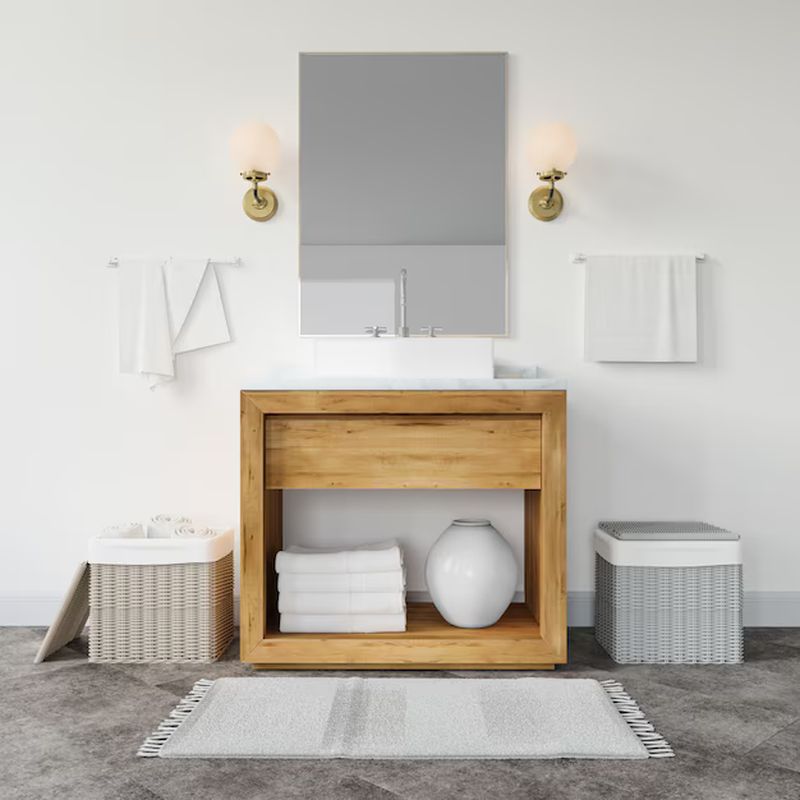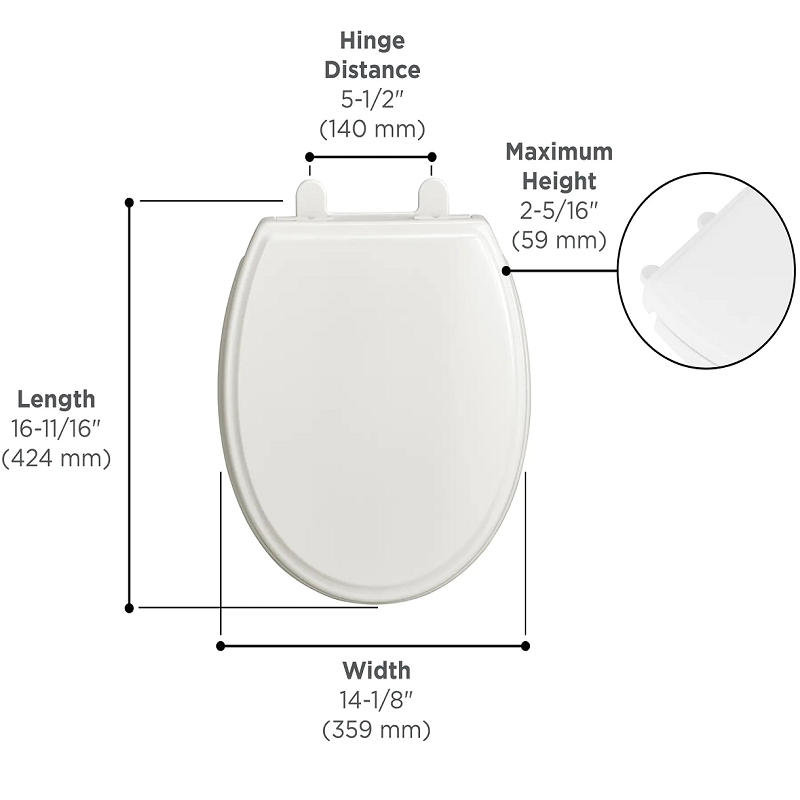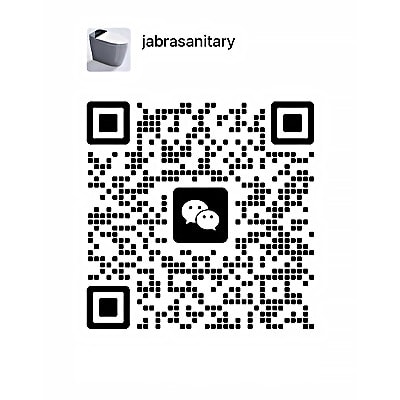 English
English
Jabra Sanitary is a sanitaryware supplier offering toilets, sinks, faucets, bathtubs, etc., at competitive prices. If you're a distributor, wholesaler, or project contractor, get a quote today!
 $23.9 Limited-time Offer
$23.9 Limited-time Offer Consignment Policy
Consignment Policy 20 Years of Experience
20 Years of Experience
Choosing a toilet for your bathroom can feel overwhelming, but the close-coupled toilet stands out as a popular choice. It combines functionality, simplicity, and classic design.
This guide will explain what is a close coupled toilet, and help you decide if a close-coupled toilet suits your home by explaining how it works, its benefits, and its drawbacks.
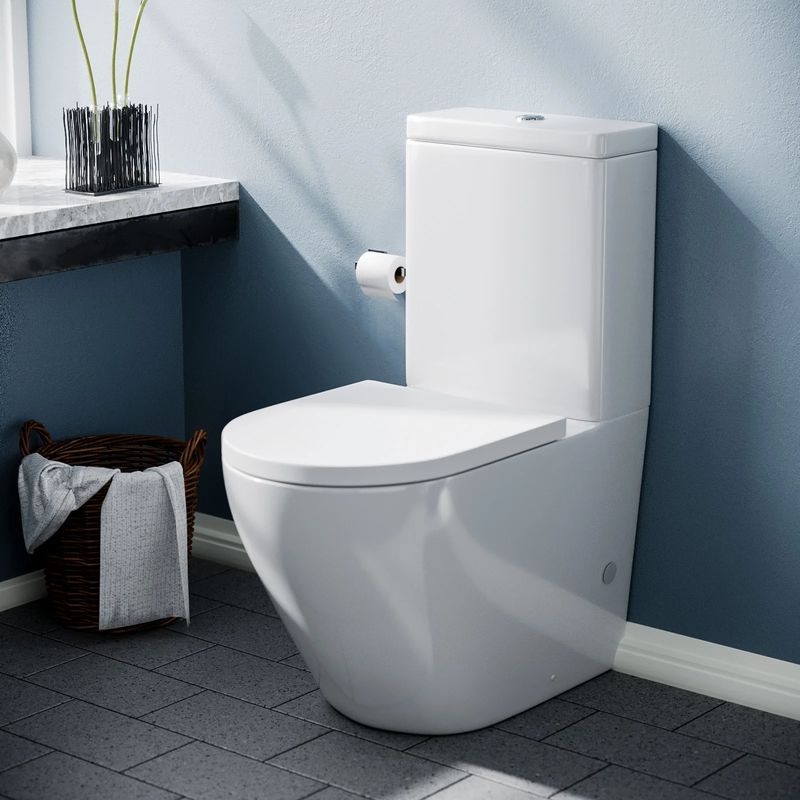
Table of Contents
What is a Close-Coupled Toilet?
Parts of a Close-Coupled Toilet
How Does a Close-Coupled Toilet Work?
Close-Coupled vs. Other Toilet Types
Benefits of Close-Coupled Toilets
Are There Any Downsides to Close-Coupled Toilets?
Features to Consider When Choosing a Close-Coupled Toilet
Close-Coupled Toilets Installation
Close-Coupled Toilets Maintenance Tips
FAQs
Final Thoughts: Why Consider a Close-Coupled Toilet?
What is a Close-Coupled Toilet?
A close-coupled toilet is a traditional design where the cistern (water tank) sits directly on the toilet bowl. The two parts connect through bolts or brackets, creating one integrated unit that provides reliable, straightforward flushing.
Parts of a Close-Coupled Toilet
Next, let's explore the close coupled toilet parts:
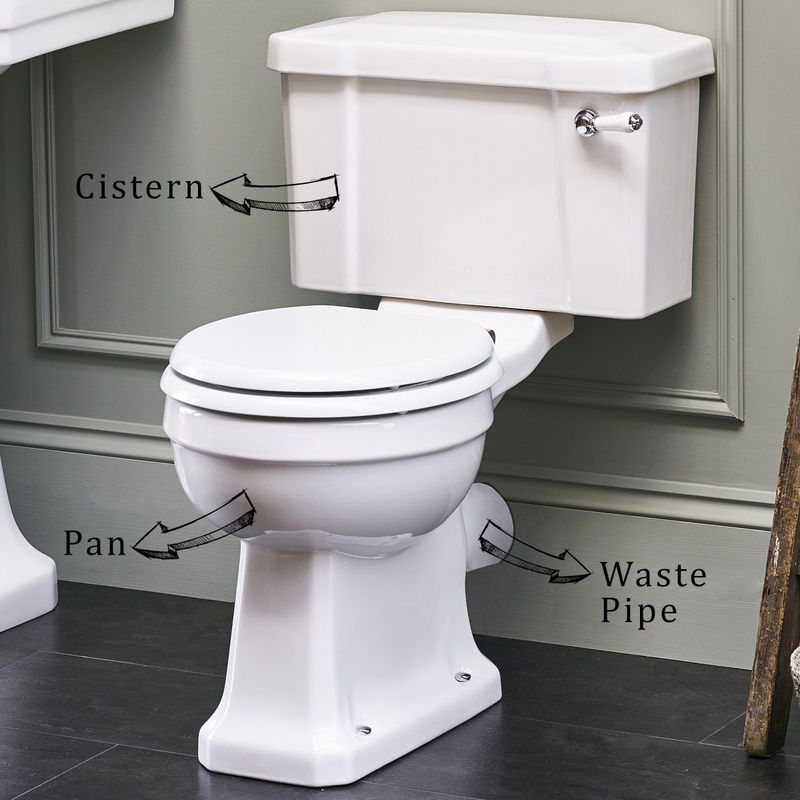
1. Internal Components
Toilet Bowl
The toilet bowl connects to the cistern through a pipe for flushing. Available in round or elongated shapes, it's typically made of ceramic for durability and easy cleaning.
Its curved design efficiently directs waste into the drainage system.
Cistern
The cistern, or water tank, sits directly on the toilet bowl and contains several key components:
- Flush Valve: Releases water from the cistern when you press the flush button or lever.
- Overflow Pipe: Prevents water damage by redirecting excess water if the cistern overfills.
- Fill Valve: Controls water flow into the cistern, ensuring proper refill levels.
2. External Design
Connecting Mechanism
Bolts, brackets, or a combined flange secure the cistern to the bowl, creating a stable unit that enables efficient flushing.
How Does a Close-Coupled Toilet Work?
A close coupled toilet works by the toilet bowl and cistern being closely connected together. These components work together to allow the water to evacuate from the cistern into the bowl and flush waste into the drainage system.
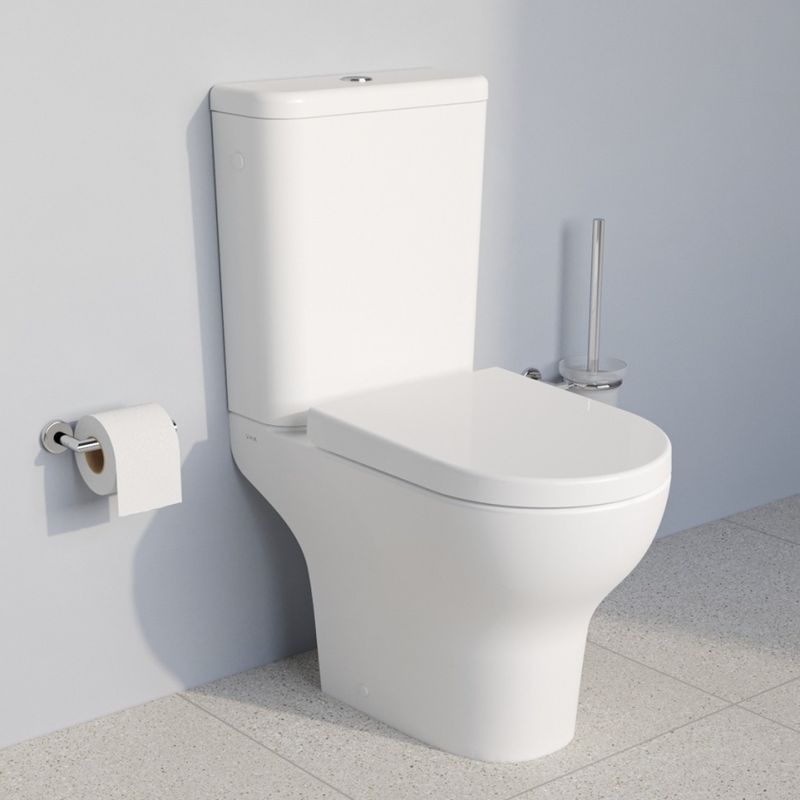
Here's how:
- The Flush Button or Lever: Activates the flushing mechanism, triggering water release from the cistern.
- The Flush Valve: Opens to release water into the bowl, propelling waste into the drainpipe.
- The Water Flow: Creates a strong swirling motion through a small opening at the cistern's base. Most models use a siphon effect, efficiently clearing waste with minimal water.
- The Overflow Pipe: Redirects excess water safely if the cistern overfills.
- Refill Process: The fill valve activates after flushing, replenishing water to the proper level.
- The Siphon Action: Returns water to its normal level after flushing, leaving the bowl clean.
Close-Coupled vs. Other Toilet Types
Different toilet designs suit different needs. Here's how close-coupled toilets compare:
| Toilet Type | Description | Key Differences |
|---|---|---|
| Back-to-Wall Toilets | A back-to-wall toilet is similar to a close-coupled toilet, but its cistern is hidden inside the wall or a unit, offering a more streamlined, minimalist look. |
|
| Wall-Hung Toilets | A wall-hung toilet is mounted directly to the wall, leaving the floor space underneath open. The cistern is typically concealed inside the wall. |
|
| Low-Level and High-Level Toilets | Low-level and high-level toilets are older designs, with the cistern mounted either just above the toilet (low-level) or much higher up (high-level), connected by a long pipe. |
|
This table highlights why close-coupled toilets remain a practical choice for traditional setups.
Benefits of Close-Coupled Toilets
Close-coupled toilets offer several advantages for both homes and commercial spaces.
Here are the key benefits:
Classic Design
These toilets feature a timeless appearance that complements any bathroom style—modern, contemporary, or vintage. The cistern sits cleanly on the bowl, creating a unified look that works in spaces of any size.
Easy Installation
Close-coupled toilets are simpler to install than other types. Since the cistern and bowl come as one unit, there's less complex plumbing work needed. This makes them ideal for both DIY enthusiasts and professional installers.
Low-Cost Maintenance
With easily accessible parts and a simple design, repairs are typically straightforward and affordable. Fewer components mean less can go wrong, keeping long-term maintenance costs down.
Budget-Friendly
Close-coupled toilets cost less than back-to-wall or wall-hung models. Their wide availability keeps prices competitive, making them an excellent choice for quality on a budget.
User-Friendly Design
The simple design works well for everyone—children through elderly. The flush mechanism is easy to reach, and the seat offers comfortable extended use.
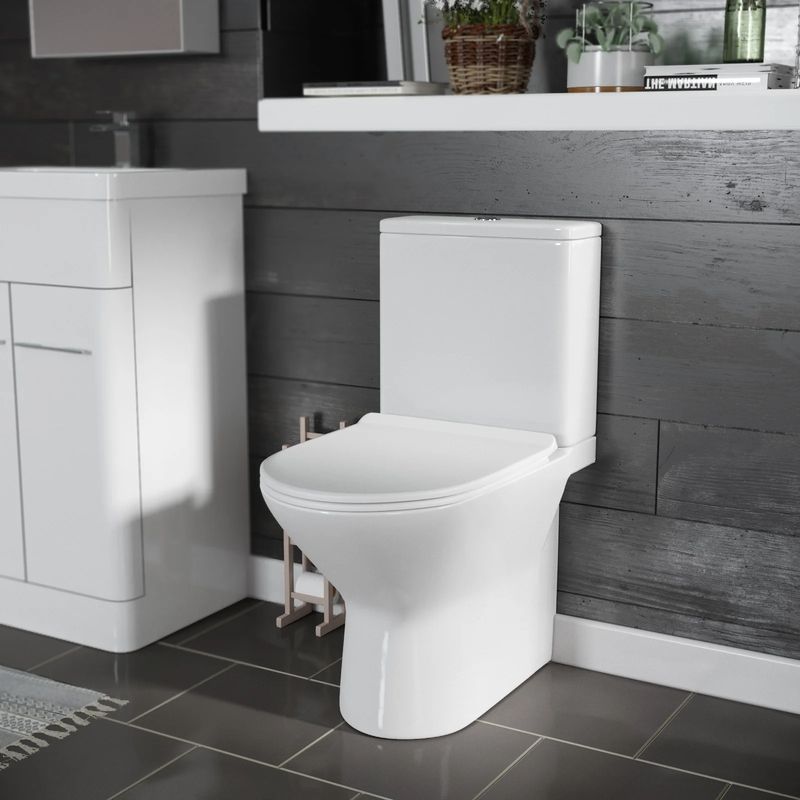
Long-Lasting Durability
Built from crack-resistant ceramic materials, these toilets typically last 15+ years. With proper care, they maintain their performance and appearance for many years.
Works with Low Water Pressure
Unlike many modern toilets that need high pressure, close-coupled models flush effectively even with low water pressure. Their design ensures efficient water flow from tank to bowl, maintaining strong flushing power regardless of pressure.
Are There Any Downsides to Close-Coupled Toilets?
While close-coupled WCs have many benefits, they may not suit every bathroom. Consider these potential drawbacks:
Style Limitations
The traditional design may look bulky or dated in modern, minimalist bathrooms. If you want a sleek, contemporary look, this style might not fit your vision. It also offers less flexibility for custom bathroom designs.
Cleaning Challenges
The joint between the cistern and the bowl can trap dirt and water deposits, making thorough cleaning difficult. The exposed plumbing also creates hard-to-reach spots behind the toilet.
Visible Plumbing
Unlike back-to-wall or wall-hung models, close-coupled toilets show their plumbing connections. If you prefer hidden pipes for a cleaner look, this design may not satisfy your aesthetic needs.
Features to Consider When Choosing a Close-Coupled Toilet
When choosing a close-coupled WC, consider these key features to ensure it meets your needs and fits your bathroom:
1. Material
The toilet's material affects its durability and maintenance. Most close-coupled toilets are made from ceramic, which resists stains, odors, and wear.
You might also find options in porcelain or vitreous china, both known for smooth finishes and moisture resistance. Choose a material that suits your budget and cleaning preferences.
2. Design and Style
While close-coupled toilets have a classic look, they come in various designs. You'll find options with rounded or elongated bowls, and cistern designs ranging from traditional to modern.
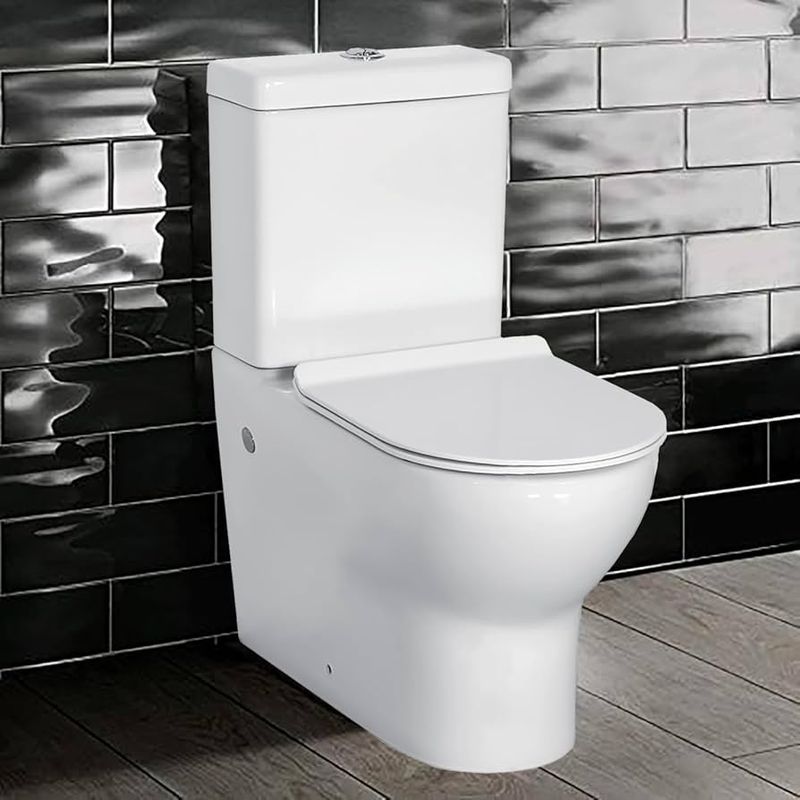
3. Bowl Shape
The bowl shape affects comfort and functionality. There are two main types:
Round Bowls
Compact and ideal for smaller bathrooms.
Elongated Bowls
Offer more seating space, popular in larger bathrooms.
4. Toilet Height
Height affects comfort and accessibility. Standard toilets are about 15 inches from floor to seat, while comfort-height models are 17–19 inches, making them easier to use.
5. Flush Type
The flush mechanism affects performance and water efficiency. Modern toilets offer two options:
Single Flush: One lever releases a fixed amount of water.
Dual Flush: Offers two options—less water for liquid waste, more for solid waste—saving water and reducing bills.
6. Soft-Close Seat
This feature prevents the seat and lid from slamming, offering quieter operation. It's particularly useful in homes with children.
7. Purchase from a Reputable Brand
Choose a trusted brand for quality and reliable support. Jabra Sanitary, for example, has positive reviews due to reliable fixtures.
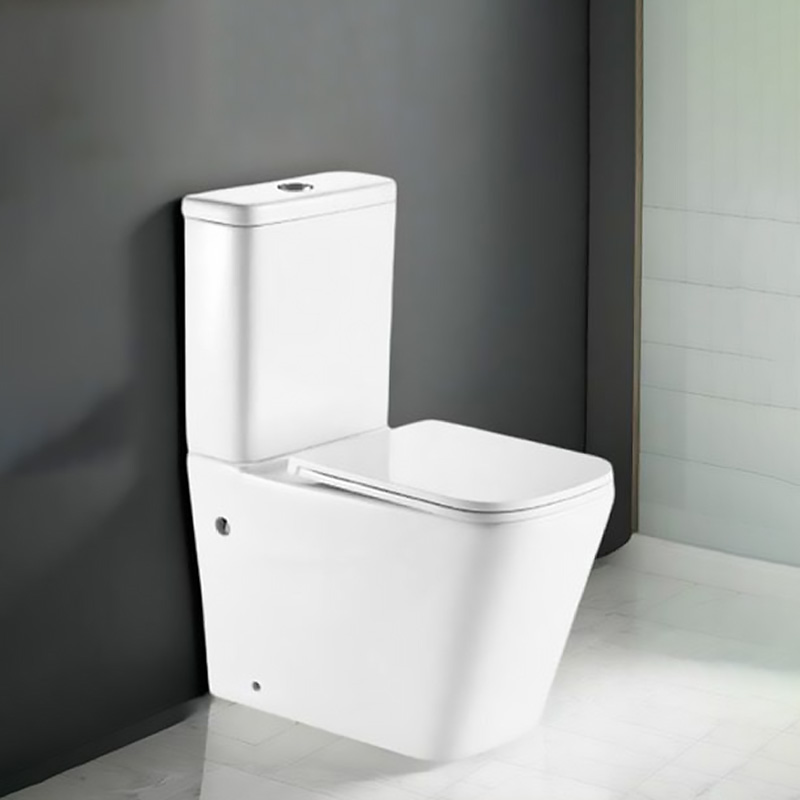 Ads
Ads
Back to Wall Square Toilet
The square back to wall toilet 2808 is a perfect blend of modern design and advanced functionality. This back to wall square toilet features our innovative Nano self-cleaning glaze, providing a smooth, antibacterial surface that remains bright and clean.
Close-Coupled Toilets Installation
Installing a close-coupled toilet is straightforward, but proper installation ensures secure, functional results. Here's how to do it:
1. Secure the Water Tank (Cistern)
First, attach the cistern to the toilet bowl. Use the provided bolts or brackets, and ensure proper positioning of rubber washers to prevent leaks.
- Position the cistern: Place it on the bowl and align the bolt holes.
- Tighten the bolts: Secure evenly, avoiding over-tightening that could crack the ceramic.
2. Connect the Toilet to the Drain Pipe
Connect the waste outlet to the plumbing using a wax ring or rubber seal.
- Place the wax ring: Apply it to the toilet base.
- Lower the toilet onto the drain: Align the outlet with the drain pipe.
- Secure the toilet: Tighten the bolts for a firm fit.
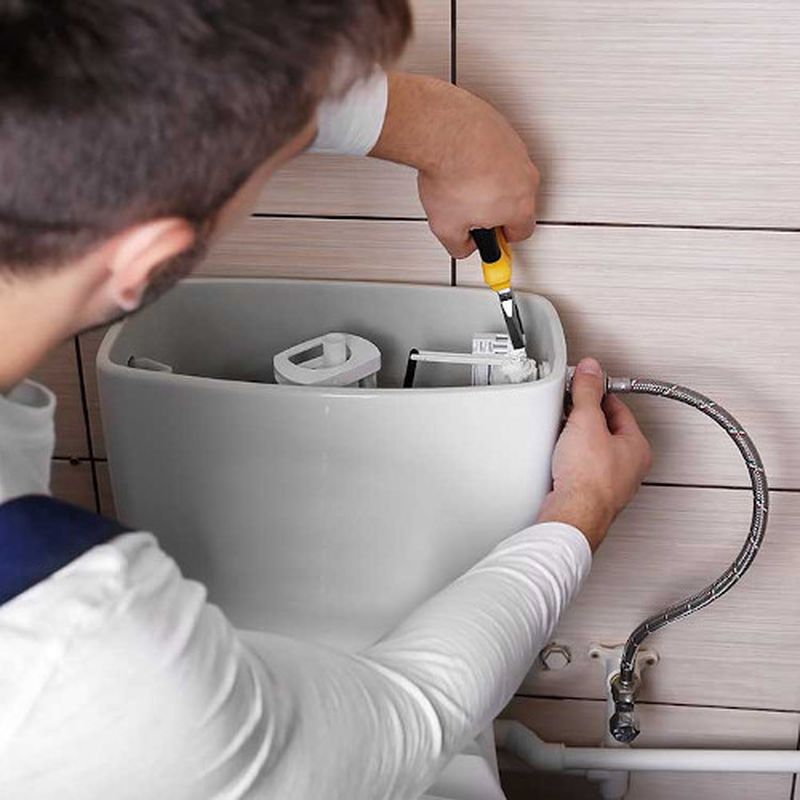
3. Seal the Toilet Base
Create a leak-free seal with silicone sealant.
- Apply silicone sealant: Run a bead around where the toilet meets the floor.
- Smooth the sealant: Create an even seal with your finger or a tool.
4. Test the Flush
Verify proper operation after installation.
- Turn on the water supply: Open the valve to fill the cistern.
- Check for leaks: Inspect all connections.
- Test the flush: Ensure proper flushing and refilling.
Watch out for these common installation mistakes:
- Leakage Due to Poor Sealing: Use high-quality seals and verify connections are watertight.
- Damage to Ceramic Parts: Tighten bolts evenly and carefully to prevent cracks.
Now that we understand the installation steps, let's explore how to maintain its efficiency.
Close-Coupled Toilets Maintenance Tips
Proper maintenance of your close-coupled toilet ensures its longevity, functionality, and hygiene. Here are effective maintenance tips to keep your toilet in top condition:
1. Clean Regularly
Regular cleaning keeps your toilet looking and functioning at its best. Dirt, grime, and mineral buildup can affect both appearance and performance. Follow these steps:
Use a toilet cleaner: Choose a quality cleaner that removes stains and limescale without damaging the surface. Avoid abrasive cleaners that can scratch the ceramic.
Clean the bowl: Scrub the inside of the toilet bowl weekly to remove buildup.
Clean the cistern: Wipe down the cistern and exterior with a damp cloth. Clean around the flush button or lever to prevent soap scum and mineral deposits.
2. Check for Leaks
Leaks waste water and increase bills. Regularly check for leakage around the base and between the cistern and bowl.
Inspect the base: Look for water pooling around the toilet base, which may indicate a seal problem.
Check the cistern: Ensure the flush valve and water inlet valve aren't leaking. Continuous water flow into the bowl may indicate a faulty flush valve.
3. Maintain the Flush Mechanism
The flush mechanism may wear out or clog over time. To maintain optimal performance:
Lubricate moving parts: Use silicone-based lubricant on the flush valve and button or lever for smooth operation.
Check for clogs: If the flush is weak, check for blockages in the water supply or flush valve.
4. Descale the Cistern and Bowl
Hard water deposits can build up. Descale every few months:
Vinegar solution: Pour white vinegar into the bowl and cistern, let it sit for hours, then scrub away deposits. This natural solution effectively breaks down mineral buildup.
Descaling tablets: Commercial tablets dissolve mineral deposits—simply follow package instructions.
5. Replace the Toilet Seat When Needed
Seats wear out, especially in frequently used bathrooms.
Tighten loose seats: Adjust the bolts underneath, but avoid overtightening to prevent ceramic damage.
Replace damaged seats: Install a new seat when the current one becomes uncomfortable, stained, or cracked. Choose from various styles to match your bathroom.
6. Monitor Water Levels
Keep cistern water levels optimal to prevent waste and ensure proper flushing.
Adjust the fill valve: Control water flow using the adjustable float or valve. This optimizes water usage and ensures efficient flushing.
7. Avoid Non-Flushable Items
Flush only toilet paper and human waste. Never flush wipes, paper towels, cotton balls, or sanitary products—they cause blockages and damage. Inform all household members to prevent plumbing problems.
FAQs
Is a Close-Coupled Toilet Old-Fashioned?
Not at all. While these toilets have a long history, they're far from outdated. According to Statista 2023 data, they hold 30% market share.
Their reliability, affordability, and simple installation make them a popular choice, with designs fitting both modern and vintage bathrooms.
How Do You Seal a Close-Coupled Toilet?
Use a wax ring or rubber seal between the toilet base and flange for a watertight connection:
- Apply the wax ring to the centered, properly seated flange.
- Place the toilet onto the flange, aligning bolt holes.
- Tighten bolts evenly without overtightening.
- Apply and smooth silicone sealant around the base where it meets the floor.
Do Close-Coupled Toilets Have an Overflow?
Yes, modern cisterns integrate overflow pipes into the flush valve system. These direct excess water safely into the waste system, preventing spillage and bathroom damage.
Can a Close-Coupled Toilet Be Pressure-Assisted?
Yes, some models feature pressure-assisted flushing, using pressurized air for powerful, water-efficient operation. These are ideal for those wanting strong flushing with water conservation.
Are All Close-Coupled Toilet Cisterns Interchangeable?
While designs may look similar, cisterns are typically model-specific. Ensure compatibility when replacing parts by checking manufacturer recommendations or consulting a plumber.
Jabra Sanitary's cisterns, for example, are designed for specific toilet models to ensure optimal performance.
How to Remove the Top of a Close-Coupled Toilet Cistern?
Follow these steps:
- Turn off the water supply and flush the remaining water.
- Remove the flush handle or button by unscrewing or unclipping.
- Carefully lift the secured cistern lid after removing the fasteners.
- Check for additional components needing removal for repairs.
Final Thoughts: Why Consider a Close-Coupled Toilet?
A close-coupled toilet offers timeless appeal. Here's why:
- Proven reliability: A time-tested design that serves both residential and commercial spaces.
- Easy installation and maintenance: Simple setup and accessible parts save time and money.
- Affordability: A budget-friendly option for bathroom upgrades.
- Versatility: Suits any bathroom size or style.
- Water efficiency: Dual-flush options save water and reduce bills while protecting the environment.
If you're ready to install or replace your close-coupled toilet, don't hesitate to reach out for a quote. Choose Jabra Toilet Supplier - an expert in toilets to help you find the perfect close-coupled toilet for your home.
We offer a range of models, such as 2808 which features innovative Nano self-cleaning glaze, self-cleaning function, high-density ceramic, and enhanced water-saving capabilities. Our products meet Australian standards with watermark certification, ensuring both quality and environmental responsibility.
With Jabra Sanitary, you're not just getting a toilet; you're getting a reliable, efficient, and stylish addition to your bathroom.









